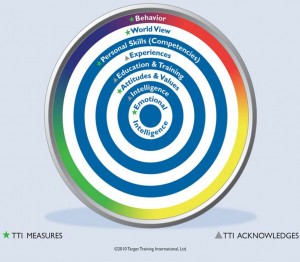When replacing a departed leader at or near the top of the pyramid, it is human nature to focus on the areas that the past leader lacked. While it seems to make sense that the company would grow by improving the leader’s weaknesses, I’ve experienced two cases where the focus on the weaknesses overshadowed the strengths required for the position.
In both cases the leader retired after a long stint from a very public position. One was a town manager, and the other was a senior minister. In both cases committees were formed and the members were intelligent, influential and knowledgeable of the requirements, yet in both cases the committees recommended and hired someone who was almost an extreme opposite of the former leader.
Dictionary.com provides the following definition of the pendulum effect:
1. Also called pendulum law. Physics. a law, discovered by Galileo in 1602, that describes the regular, swinging motion of a pendulum by the action of gravity and acquired momentum.
2. the theory holding that trends in culture, politics, etc., tend to swing back and forth between opposite extremes.
In definition one, gravity is responsible for the action. The bottom of the pendulum is the steady, stable state (equilibrium). The bottom is where the pendulum wants to go, but it overshoots its goal, then tries to return to it. Definition two is what we see in the political system: driven by a group of people who don’t like the current administration, the majority votes for the other party.
In the case of the town manager (politics, but not elected), the previous leader was a micromanager and controller. While the townspeople didn’t know the specifics of how the town operation functioned, it appeared to be well run and it was well regarded, desirable, and ranked at the top for towns in the state. What wasn’t apparent by many was that the managers under the top manager never had to make decisions because the town manager would approve them all. The committee that was formed to hire the next town manager decided they wanted more of a delegator for the next leader. The pendulum had swung to the other extreme. While I approve of more delegation, there was no transition plan put in place for the new manager. It was like the inmates ran the asylum: total chaos! Luckily, after a few years and much angst by all who worked there and those on the fringes, the 2nd level leaders adapted to the new management style.
In the case of the senior minister, the pendulum swung from an introverted intellectual to an extroverted multitasker. The search committee surveyed the congregation, looking for a scholar who was a good teacher, but they also wanted someone warmer with a higher emotional intelligence. While the new pastor received his PhD soon after starting in his new position, his sermons were not as intellectual as the previous minister, and many came to miss the old sermons.
Both of these positions are incredibly demanding, and there is a very long list of skills needed to succeed.
 If the starting point for the new leader is the position of the departed leader, then you will likely get someone who on the other side of the pendulum arc. The further away the previous leader was from the stable, steady state (amplitude), the further the next leader will be from equilibrium due to the kneejerk reaction to the prior’s weaknesses. That’s just how a pendulum works – if it’s pushed a large distance from the bottom, it will go the same distance up the other side. No matter the position to be filled, people tend to try to hire someone who was either successful in a position, or the opposite of someone who failed.
If the starting point for the new leader is the position of the departed leader, then you will likely get someone who on the other side of the pendulum arc. The further away the previous leader was from the stable, steady state (amplitude), the further the next leader will be from equilibrium due to the kneejerk reaction to the prior’s weaknesses. That’s just how a pendulum works – if it’s pushed a large distance from the bottom, it will go the same distance up the other side. No matter the position to be filled, people tend to try to hire someone who was either successful in a position, or the opposite of someone who failed.
The pendulum effect can be disrupted by benchmarking the job. The benchmarking process that we use for hiring uncovers the requirements of the job, and doesn’t focus on the people who may have previously held the position.
It’s important to understand what is unique about one job versus other related jobs. The critical success factors (I prefer key accountabilities) are determined through a process of brainstorming, grouping and prioritizing. Then, a handful of stakeholders take an online assessment – not about themselves, but about the job. This creates the benchmark for the ideal candidate: the one that can stay in equilibrium due to possessing the behaviors, skills, motivation, and acumen needed to succeed.
Leadership positions can make or break a business. Companies need to stop guessing and start assessing the candidates, then compare them to a customized job benchmark to find the ideal leader.
Get the Perfect Hire Blueprint eBook on Amazon for detailed info on the entire hiring process, or contact us to get a personalized solution for your business!

 I use
I use 